|
This Alaska driving vacation is all about adventure, wildlife, nature and magnificent scenery in Alaska and Canada's Yukon Territory: Your driving vacation begins in Anchorage and includes Denali National Park with 20,130 ft. Mt. Denali (formerly Mt. McKinley) - the highest mountain in North America, a glacier cruise through Prince William Sound and the gold mining town of Dawson City. Take a trip into the wilderness on the historic White Pass & Yukon Railroad steam train along the famous Chilkoot & White Pass Trail from Skagway. Join a wildlife and whale watching cruise into Kenai Fjords National Park, visit Glacier Bay and experience many other highlights in the Land of the Midnight Sun. Contact us to extend the tour or customize the itinerary. |
AK#11 The Grand Prospector | Alaska and Yukon Self Drive Adventure
Tour Itinerary
Dates | Rates
Options | Extensions
Accommodation
Rental Car
Self Drive FAQ
|
Day
01 |
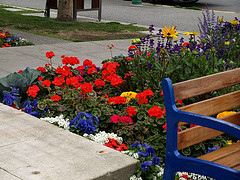 |
Anchorage Upon arrival in Anchorage, pick up your rental car at the airport or downtown. Get ready for an Alaska vacation of a lifetime. Anchorage features dozens of parks and 122 miles of paved bike paths. Warmed by a maritime climate, you can spend the day salmon fishing at Ship Creek, hiking the nearby mountains, photographing glaciers and dining at a four-star restaurant. Within a 15-minute drive from downtown on the Hillside is the tree-lined trailhead of Anchorage’s most popular hike, Flattop Mountain. A short floatplane ride opens up the possibility of almost any type adventure. That’s one reason why Anchorage’s Lake Hood is the world’s busiest floatplane base. Try some fresh Alaska seafood (Salmon, Halibut and Dungeness Crab) for dinner in one of the many excellent restaurants around the hotel. Afterwards enjoy a stroll along the coastal trail with sweeping views of Mt. Denali and Mt. Susitna aka: the "Sleeping Lady". Overnight: Anchorage |
|
Day
02 |
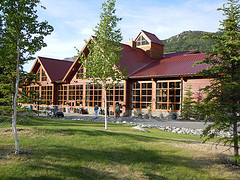 |
Anchorage - Talkeetna Enjoy sweeping views of snowcapped mountain peaks while traveling from Anchorage via Wasilla (Iditarod Museum) to Talkeetna - the base for most climbing expeditions. This afternoon you may enjoy a flightseeing tour to Mt. Denali (optional). This magnificent flight takes you within six miles of Mt. Denali's summit. As your flight departs, you begin to see how the last ice age has shaped the land. Moments later, you enter a world of rugged high mountain peaks and wide glacier filled valleys. See the Sheldon Amphitheater, beautiful Ruth Glacier, and the Great Gorge. Distance: 120 Miles | Overnight: Talkeetna |
|
Day
03 |
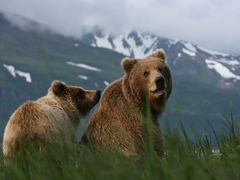 |
Talkeetna - Denali National Park Continue your journey along the Alaska Range across Denali State Park with countless wildlife viewing opportunities. Stopover at Byers Lake and rent a canoe or kayak. Arrive at Denali National Park and check in your hotel. Denali, the “Great One”, is the name Athabascan people gave the massive peak that crowns the 600-mile long Alaska Range. Denali National Park and Preserve was created 1980 from the former Mt Mc.Kinley National Park. At over 6 million acres, the park is larger than the State of Massachusetts. It exemplifies interior Alaska’s character as one of the world’s last great frontiers for wilderness adventure and it remains largely wild and unspoiled, as the Athabascan knew it. Distance: 110 Miles | Overnight: Denali National Park |
|
Day
04 |
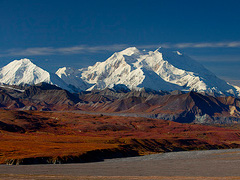 |
Denali National Park Early departure (pre-reserved time) for a full day national park and wildlife observation tour within the shadows of 20.320 foot Mt. Denali to the Eielson Visitor Center or scenic Wonder Lake with a immense view of “ the Mountain”. Look for Dall sheep, moose, caribou, wolves and grizzly bears moving along the ridges and river beds or observe one of the 150 different bird species which inherit the park area. From the park road you enjoy great hiking opportunities. Return to the Denali Park entrance at any time during the day and participate in a ranger talk if time permits. Overnight: Denali National Park |
|
Day
05 |
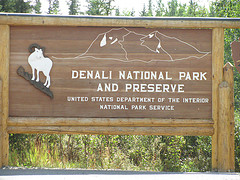 |
Denali National Park - Fairbanks Short drive via Nenana (Alaska Ice Classics) to Fairbanks. Fairbanks, known as the Golden Heart City of Alaska, is the gateway to the interior and features almost 24 hours of daylight during the summer months. You are invited to explore the local gold rush history, its vibrant traditional native cultures as well as its abundant wildlife and fantastic scenery. Tucked into miles of unexplored wilderness only 120 miles from the Arctic Circle, Fairbanks offers excellent year-round outdoor recreational opportunities. This afternoon you may visit the renown Alaska University Museum featuring Alaska's natural history best collection, Alaskaland or take an authentic sternwheeler on a scenic 20-mile roundtrip cruise down the Chena and Tanana Rivers. Enjoy lively narration, stop at a reconstructed Athabascan Indian Village to learn about native hunting & fishing techniques and watch a dogsled demonstration. Distance: 110 Miles | Overnight: Fairbanks |
|
Day
06 |
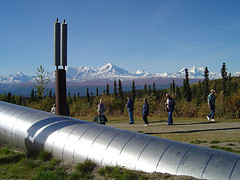 |
Fairbanks In 1902, Felix Pedro found gold in the region and thousands of prospectors swarmed to the area in search of the “Mother lode.” Nearly a century later, Fairbanks is the trade and transportation center for Interior and Far North Alaska. From mid-May through July, visitors can enjoy more than 20 hours of sunlight a day. Today you have the unique chance to cross the Arctic Circle and to visit the vast interior. Join us on a guided van tour along the Dalton Highway to the Arctic Circle. En-route enjoy stunning views of the interior and the Trans-Alaska-Pipeline, put your hand in the Yukon River, travel through the wetlands and crest the high plateau of Finger Mountain looking out for wildlife. You can also join a bush mail plane flight and experience how the Gwich'in Athabascan Natives live in "Bush" Alaska. Another option is to drive along Chena Hot Springs road, go on a hiking trip and visit Chena Hot Springs Resort. Here you can relax in the large natural outdoor rock lake and visit the Aurora Ice Museum. |
|
Day
07 |
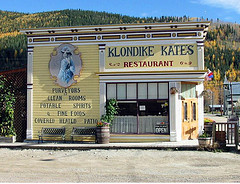 |
Fairbanks - Dawson City Heading south, the Richardson Highway passes through stands of white birch and black spruce, often photogenic close to the Tanana River. Soake up the raw beauty of the drive into the central Alaska Range, often paralleled by the Alaska pipeline. Continue your journey on the Top of the World Highway with endless views into spectacular alpine valleys. If you travel after the first hard frost - usually in mid August, the hills turn colors so brilliant that it seems almost unreal. You cross the mighty Yukon River and arrive in Dawson City. The legendary capital of the 1898 Gold rush is a living relic. After 100 years, miners are still digging for gold. Distance: 380 Miles | Overnight in Dawson City. Please Note: We can add an overnight in Tok if you wish to drive the distance in two days. |
|
Day
08 |
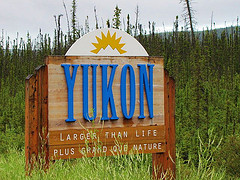 |
Dawson City Visit the historical buildings, Jack London and Robert Service cabins, abandoned commercial buildings and old stores that were the pulse of the gold rush capital in its hey-days. And as you drive through the heart of Dawson City, your imagination will run to the likes of Klondike Kate, Arizona Charlie Meadows and Diamond Tooth Gertie strolling down Dawson's boardwalks. Their spirit is as alive today as it was in 1898. From the one-time capital of the Yukon you'll follow history up Bonanza Creek (pan for gold) to Discovery Claim and Grand Forks once boasted a population of 10,000 where the Eldorado Creek and Upper Bonanza come together to form the "mighty" Bonanza Creek. In the evening, immerse yourself in the lively atmosphere of Diamond Tooth Gerties Gambling Hall, where you can enjoy thrilling casino games and dazzling cancan performances. Overnight: Dawson City |
|
Day
09 |
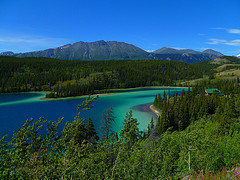 |
Dawson City - Whitehorse Heading south, the Klondike Highway passes through stands of white birch and black spruce, often close to the Yukon River. Soak up the raw beauty of the surrounding landscape, often paralleled by the Yukon River. Stopover at the Five Finger Rapids and hike down to the shore of the Yukon River. Late afternoon you will reach Yukon's capital city, Whitehorse - a city with a unique combination of pioneer values and urban sophistication. Take a side trip to scenic Miles Canyon. Distance: 340 Miles | Overnight: Whitehorse |
|
Day
10 |
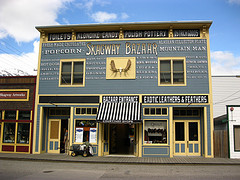 |
Whitehorse - Skagway Short drive via the South Klondike Highway to Skagway. In the rush years of 1897 and 1898, Skagway and its ghost-town twin city of Dyea were the logical places to get off the boat to head off on the trek to the gold fields near the new city of Dawson City, Yukon Territory. Skagway instantly grew from a single homestead to a population of between 15,000 and 25,000. This was a wide-open boomtown, a true Wild West outpost that in its biggest years was completely without law other than the survival of the meanest. Then, almost as quickly as it started, the rush ended and the town deflated. Distance: 110 Miles | Overnight: Skagway |
|
Day
11 |
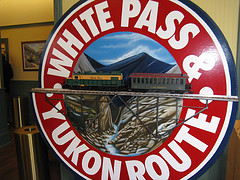 |
Skagway Today you have the chance to board the historic narrow-gauge White Pass & Yukon Railway and ride along the White Pass Trail to the White Pass Summit. The entire distance between the gold-rush community of Skagway to the summit was completed in only two years in 1900's. The steamer pulls the train a couple of miles, then diesels take the cars - some of them originals more than 100 years old - up steep tracks that were chipped out of the side of the mountains. In the afternoon walk around the historic townsite and check out the old buildings. You may even visit the grave of "Soapy Smith" and walk part of the famous Chilkoot Trail. You can also visit Juneau on a day trip or visit famous Glacier Bay National Park and join the glacier cruise. Overnight: Skagway |
|
Day
12 |
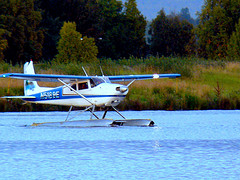 |
Skagway - Haines Spend this morning in Skagway and explore the old town buildings. Take the afternoon Alaska Ferry to Haines. It is a spectacularly scenic and relaxing ferry ride along the Lynn Canal, a fjord that is as beautiful and pristine as any in the world. Fjord walls steeply rise from sea level to 7,000 feet. Arrive in Haines, located in the Valley of the Eagles. Almost 4,000 American bald eagles gather along a 5 mile stretch of the Chilkat River near Haines and Klukwan each fall. Attracted by a late run of salmon, eagles come from all over Alaska, British Columbia and as far away as the state of Washington. Starting in October, hundreds and hundreds of eagles can be seen along sand bars or in nearby cottonwood trees. Distance: 5 Miles + Ferry Trip | Overnight: Haines |
|
Day
13 |
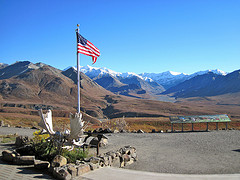 |
Haines - Haines Junction | Kluane National Park The Haines Highway winds from Haines over the Chilkat Pass - the highest summit on this highway. You pass Klukshu, a native summer fishing camp offering great photo opportunities. Drive through the Chilkat Bald Eagle Preserve before arriving at Kluane National Park. The Kluane area covers the largest non-polar icefields in the world. Visit the sheep mountain visitor center with its interpretive programs about the flora and fauna. Viewing telescopes are available where you can spot dall sheep on the mountain slopes. Overnight: Haines Junction |
|
Day
14 |
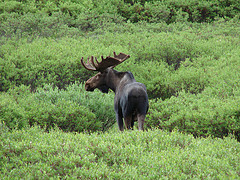 |
Haines Junction - Tok This morning go on a short hiking trip before driving north along the shores of beautiful Kluane Lake. Stopover at Sheep Mountain and look out for dall sheep gracing alongside the mountain slopes. Your journey continues on the famous Alaska Highway through endless wilderness areas. Arrive in Tok, often referred to as the "Dog Mushing Capital of Alaska". The community originated as an Alaska Road Commission camp for the construction of the Alaska - and Glenn Highways in the 1940s. Distance: 290 Miles | Overnight: Tok |
|
Day
15 |
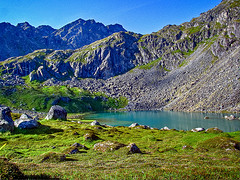 |
Tok - Valdez Your journey continues on the Glen Highway, offering an impressive view of the Wrangell Mountains - Mt. Deborah, Mt. Sanford and Mt. Drum. Once you have reached the Richardson Highway stopover at the historic roadhouse in Copper Center and watch native fish wheels at the nearby Copper River, providing an excellent salmon run. Shortly afterwards the Worthington Glacier peeks into view where a boardwalk leads to the toe of the glacier. Valdez - often called “ the Switzerland of Alaska” is a gateway for salmon fishing trips and narrated cruise tours to the magnificent Columbia Glacier. Visit the terminus of the Alaska Pipeline Terminal or enjoy some kayaking or short hiking trips. Distance: 250 Miles | Overnight: Valdez |
|
Day
16 |
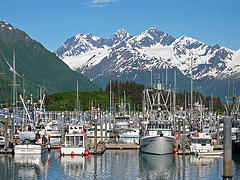 |
Valdez - Prince William Sound | Ferry Trip - Seward Scenic cruise across Prince William Sound on board the Alaska Marine Highway Ferry. Watch out for whales, bald eagles, seals, sea lions and other marine wildlife. In the distance you'll see Columbia Glacier - one of the largest tidewater glaciers in Alaska. Arrive in Whittier and drive to Portage Glacier. After a stop at the visitor center continue to Seward, a small fishing community at the gateway to Kenai Fjords National Park. This afternoon you have time to visit Exit Glacier. A short trail leads to the toe of the glacier where you can climb on the surface of the glacier itself. Distance: 80 Miles + Ferry Trip | Overnight: Seward |
|
Day
17 |
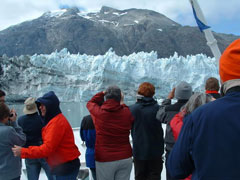 |
Seward | Kenai Fjords National Park In the morning take a Kenai Fjords cruise tour boat for an exciting glacier and wildlife cruise into magnificent Aialik Bay with its calving glaciers and stunning scenery. Covering 110-miles, the trip is narrated by a National Park Ranger, who is highly adept at spotting wildlife and pointing out the many spectacular sights. Wildlife is abundant throughout Kenai Fjords National Park, and the tidewater glaciers are massive. You'll visit the mighty Aialik Glacier where guests witness calving - a process by which glaciers shed giant blocks and slabs of ancient ice. The cruise also offers the good chance to spot whales in Alaska. Overnight: Seward |
|
Day
18 |
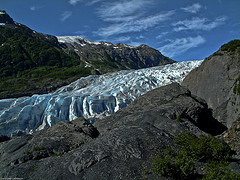 |
Seward - Anchorage You may spend some time at the Alaska SeaLife Center – the world’s first cold water marine search institute with wildlife rehabilitation and public education facilities, try your luck halibut or salmon fishing or attend a kayaking tour from Lowell Point - the choice is yours. On your drive back to Anchorage, stopover at Alaska's Wildlife Conservation Center, providing refuge for orphaned, injured, and ill animals-those that can't survive in the wild. Continue to Alyeska and take the Alyeska Tramway to get a bird's eye view of the surrounding glaciers and the Turnagain Arm. Drive along the Seward Highway to Anchorage and check in your downtown hotel. |
|
Day
19 |
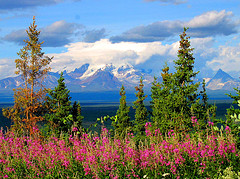 |
Anchorage The remaining day in Anchorage is at leisure. Explore Alaska's largest city by yourself and visit the many points of interests. Take a walk on the Coastal Trail along Cook Inlet to Earthquake Park with a magnificent view of the Alaska Mountain Range in the distance. Don't miss a delicious lunch at one of Anchorage's top seafood restaurants. Your vacation ends with the return of your rental car. |
| Rates in US $ / per Person | Single | Double | Triple | Quad | Child | |
| May 10 - May 31 | $7674.00 | $4101.00 | $3046.00 | $2515.00 | $438.00 | |
|
|
||||||
| June 1 - August 31 | $9033.00 | $4776.00 | $3493.00 | $2847.00 | $438.00 | |
|
|
||||||
| September 1 - September 15 | $7424.00 | $3977.00 | $2963.00 | $2452.00 | $438.00 | |
| Rates in US $ / per Person | Single | Double | Triple | Quad | Child | |
| May 10 - May 31 | $8165.00 | $4335.00 | $3175.00 | $2598.00 | $438.00 | |
|
|
||||||
| June 1 - August 31 | $10025.00 | $5265.00 | $3795.00 | $3066.00 | $438.00 | |
|
|
||||||
| September 1 - September 15 | $8165.00 | $4335.00 | $3175.00 | $2598.00 | $438.00 | |
| Daily Departures from May 10 - September 15 |
|
| Rates in US $ | per Person | Adult |
| Talkeetna: Mt. Denali Flightseeing Tour + Optional Glacier Landing | |
| Upgrade Shuttle Bus to Escorted 13-Hour Kantishna Wilderness Lodge Tour with Lunch, Interpretive Program, Gold Panning, En-route Refreshments Departure: 6:00 am / Return 7:30 pm |
|
| Fairbanks: Evening Bush Mail Plane Flight to an Arctic Village | |
| Fairbanks: Arctic Circle Van Tour (7 am - 10 pm) | |
| Skagway: White Pass & Yukon Railroad Summit Excursion (3 - 3 1/2 hrs) | |
|
First Class Hotel Category (**** Hotels & Lodges) First Class hotels usually offer additional amenities such as a restaurant, lounge, bar, fireplace seating, fitness room, swimming pool/hot tub, etc. All rooms in First Class hotels belong to a higher category and are always equipped with a private bathroom. Most hotels in this category are usually located in prime locations in prime downtown locations or in national parks. These include larger hotel chains such as: Marriott Hotels, Sheraton, Westmark Hotels, Princess Hotels and Lodges, Clarion Suites, Comfort Inn & Suite. The larger hotel chains are only available in Anchorage and Fairbanks. If a major hotel chain is not available, we prefer to book local premium hotels/deluxe cabins or cottages for our clients. Please note that premium accommodations may not be available in small towns; in such cases we will book the best available accommodation.. 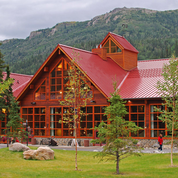 Superior Hotel Category (*** Hotels, Motels & Lodges) Superior Hotels offer a good amount of essential guest services and are located in downtown locations and/or in/near national park areas. All superior class hotel rooms are equipped with a private bathroom. Example larger hotel chains for superior class hotels are: Holiday Inn, Howard Johnson, Guesthouse Inn, Ramada Inn, High Country Inn, Aspen Hotel Group, Comfort Inn. As you might be aware, that these hotel chains are not available throughout Alaska. In such cases or/and when we feel that Alaskan owned hotels & lodges offer a better experience, we go with that choice. Cabins and Cottages also considered in this category to make your experience even more ‘Alaskan’. We ensure that all the Cabins & Cottages have a private bath to make your stay comfortable. 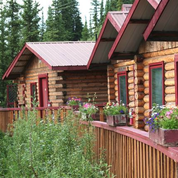 |
Rental CarWe have compiled a list of car rental categories that fit Alaska trips and are suitable for various budgets, trip durations, as well as group sizes. Mid Size Car (included - part of the package / additional day $150) Generally, midsize cars measure between 180 to 195 inches in length but can vary depending on specific models. Mid-size cars, also commonly known as intermediate or standard cars, are four-door sedans that are more spacious than compact cars while still being fuel-efficient. They can fit 3 or sometimes 4 bags depending on the model. They feature more interior space compared to compact cars and offer comfortable seating for four to five passengers.  Full Size Car (upgrade $8 per day / additional day $160) Full Size cars are what many people would describe as large cars. A full-size car typically refers to a vehicle that offers more extensive interior space, comfort, and power compared to smaller vehicles such as compact or midsize cars. These cars usually have larger dimensions, including length, width, and height. They commonly feature roomy interiors with ample seating for five or more passengers along with expanded trunk capacity for luggage or cargo. Historically, full-size cars were synonymous with large sedans boasting V8 engines and body-on-frame construction. While this has changed over time due to evolving industry trends and technological advancements, what remains consistent is the emphasis on spaciousness, comfort, and performance these vehicles provide.  Standard Size SUV (upgrade $55 per day / additional day $210) SUVs (short for sport or suburban utility vehicles) are good-sized vehicles with a rugged look, set higher off the road than normal cars. In an SUV, the description of “standard” generally refers to the size of the SUV. The standard SUV is larger than the intermediate or compact versions. These full-size models are more powerful, like a truck, and they are usually more equipped to handle a wider variety of terrains and road conditions as well. In addition to being powerful, their size also means that they typically have more seating capacity than the smaller SUVs. They can seat more passengers and have more cargo space for transporting luggage and equipment. 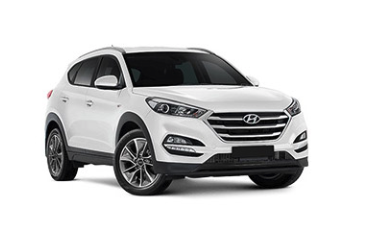 Premium SUV (upgrade $170 per day / additional day $325) A favorite of weekend warriors and full-time adventurers, this sturdy SUV rental boasts versatile interior and strong performance. A premium SUV is a high-quality, extra-large sport utility vehicle made to seat 7 or 8 passengers in three rows of seating. They also have powerhouse engines and room for plenty of cargo. The result is a smooth and spacious ride. Premium SUVs are suitable for different types of terrain and great for all types of travelers and occasions. Book from this vehicle group to enjoy a safe, strong, family-friendly SUV with extra space and premium features. The following models included in the premium SUV vehicle group will make you happy to hit the road. 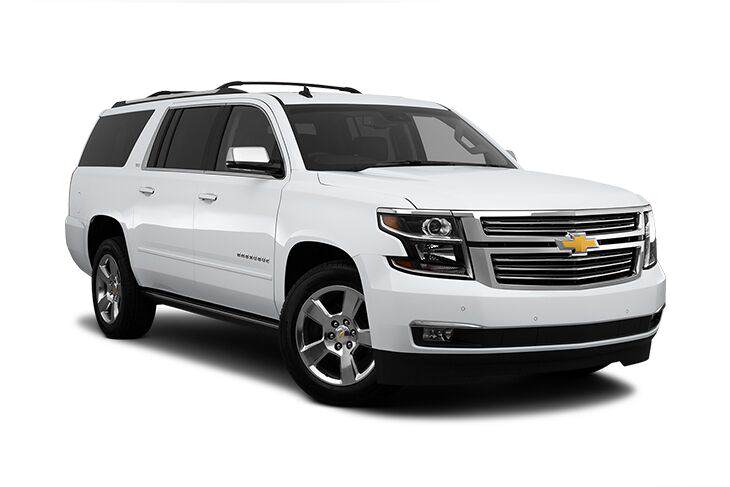 Mini Van (upgrade $90 per day / additional day $250) This roomy mini van is your ticket to family adventures and travel memories on your next rental. More spacious than a full-size car, and with better gas mileage than an SUV, a minivan is a 7-passenger van that provides unbeatable comfort and convenience. By providing leg and luggage room, configurable seating and storage layouts, easy in-and-out, competitive fuel efficiency, and high-performance drive—all without sacrificing style—minivans accommodate every kind of group outing, from lengthy family vacations to quick business trips. Did somebody say “road trip”? 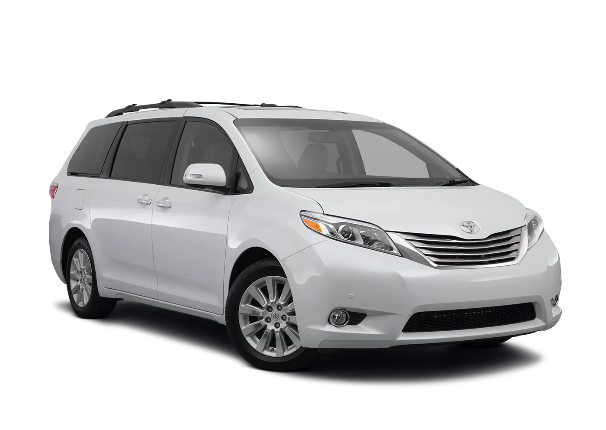 11 Passenger Van (upgrade $250 per day / additional day $400) Choose a 11-person passenger van so that no one gets left behind on your road trip or vacation. Instead of trying to coordinate a car pool; save time, resources, and gas money by putting everyone together in one clean and comfortable van. You'll find each passenger has much more leg room. Sample Models: Chevrolet Express, Ford Transit or similar Sample Features: 3 Doors –10 to 11 Passengers- 6 Large Suitcases - Air-conditioning - Automatic Transmission 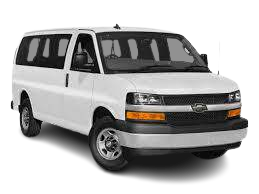 |
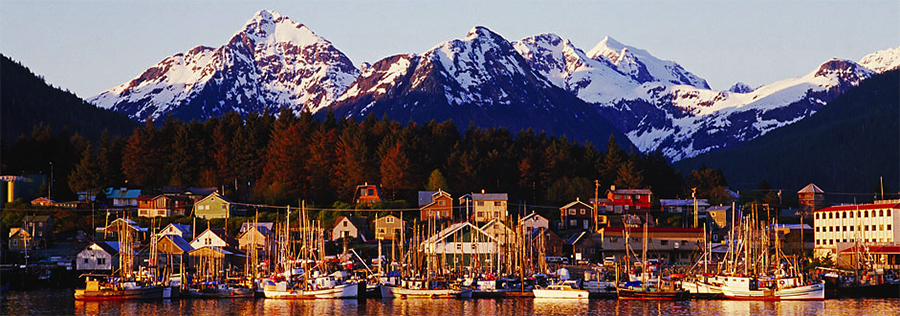 |
||||||||||||||||||||||||||||||||||||||||||||||||||||||||||||||||||||||||||||||||||||||||||||||||||||||||||||||||||||||||
Self Drive Tours Information - FAQ
|
||||||||||||||||||||||||||||||||||||||||||||||||||||||||||||||||||||||||||||||||||||||||||||||||||||||||||||||||||||||||